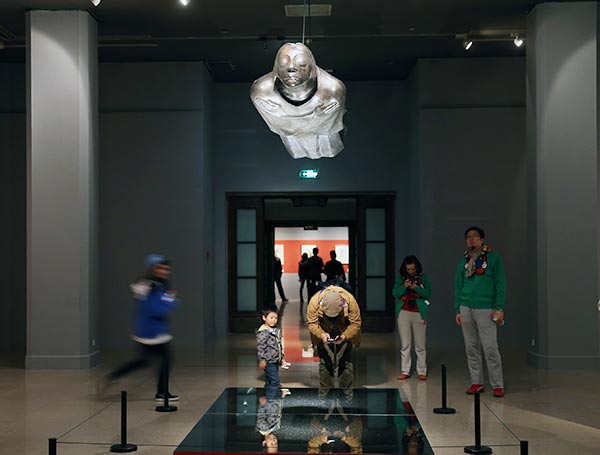Printmaker's art captures tragedy of war victims
Updated: 2015-10-27 08:41
By Lin Qi(China Daily)
|
|||||||||||
 |
|
Power of Black and White shows the impact of Kaethe Kollwitz's art in Germany and China. [Photo by Jiang Dong/China Daily] |
Another sculpture, Der Schwebende (the floating), portrays a flying angel hung in midair. The angel's face resembles Kollwitz's and the piece is the only exhibit not her work.
It was crafted by Ernst Barlach, the German expressionist sculptor and a longtime friend who shared common artistic views, and who imported in the sculpture his respect of Kollwitz.
"Her heart and mind were always occupied with empathy for the poor," Klaus Siebenhaar, a professor with Free University of Berlin, says of Kollwitz. He curated the exhibition with his colleague Matthias Henkel.
"She and her husband, Karl Kollwitz, a doctor, lived in a district where a lot of the underprivileged took shelter. Karl treated poor patients at their apartment, by which Kathe got to be more knowledgeable of their situations and was inspired to create," Siebenhaar tells China Daily.
Siebenhaar says the exhibition shows the impact of Kollwitz's art in Germany and how it influenced Chinese art.
Dozens of schools in Germany are named after her and three museums are solely dedicated to her art, including the Kaethe Kollwitz Museum Berlin, whose collections are on show.
Kollwitz has a lot of Chinese fans who are fascinated by both the miseries and beauty of life expressed in her works.
Her art and engraving style has influenced profoundly several generations of Chinese printmaking artists since the 1930s, Wu says.
Despite her achievements, Kollwitz never regarded herself as someone special, according to Jan Kollwitz, her great-grandson and a ceramic artist.
"She lived a very modest and ordinary life. Because Karl (the husband) served the poor, they couldn't afford to buy a house and settled in apartments," Jan Kollwitz says.
There are four sculptures on show that are from the family collection.
"She was struggling with expressing purity in her works. She worked hard till the last moment of her life," he says.
If you go
9 am-5 pm, through Nov 23. National Art Museum of China, 1 Wusi Street, Dongcheng district, Beijing. 010-6400-1476.
Related:
Art fete showcases close bonds with Mongolia
Auction to put focus on growth of Chinese oil painting
Related Stories
Extraordinary masters of folk art made famous on the Internet 2015-10-27 05:21
Chinese art troupe presents gala performance in Albania 2015-10-26 16:15
'Photo Beijing 2015' int'l photography week kicks off in Beijing 2015-10-26 14:39
Works of a modern ink master 2015-10-26 13:53
Rock craving on show 2015-10-26 13:42
Today's Top News
Over 200 dead as huge earthquake shakes S. Asia
British pub becomes tourist attraction after Xi's visit
King's visit to boost partnership: Dutch FM
Balkan, EU leaders agree to coordinate on migrants
Hospitality creates trip to remember
Xi appeals for Sino-British soccer boost
Sino-UK 'global' partnership sealed with declaration
Inmarsat Plc agrees strategic partnership with China
Hot Topics
Lunar probe , China growth forecasts, Emission rules get tougher, China seen through 'colored lens', International board,
Editor's Picks

|

|

|

|

|

|






